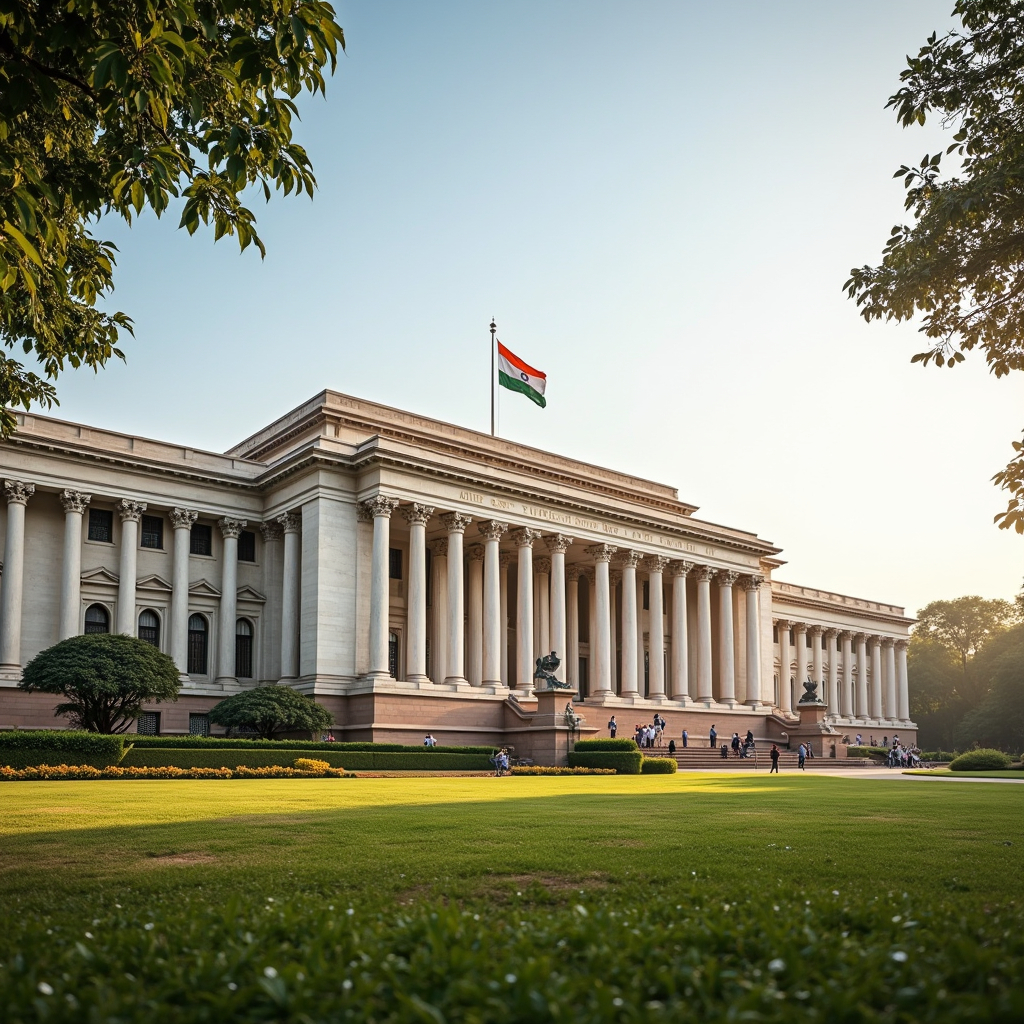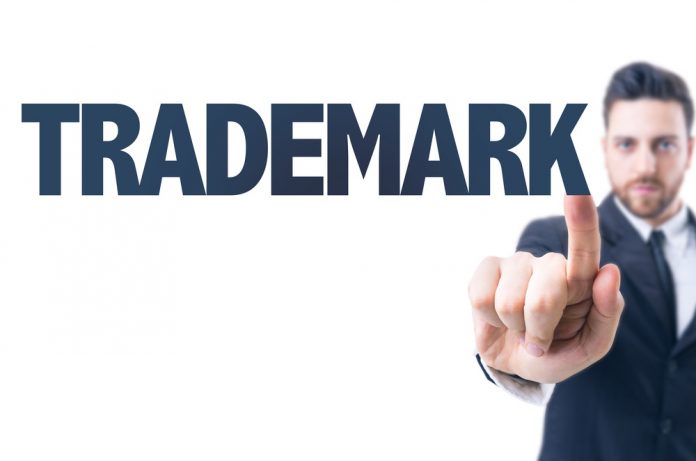This article is written by Moiz Akhtar. This article explains the relevance and necessity of trade marks in today’s modern era where the world is running on complex business machinery. This article explains Section 11(1) of the Trade Marks Act, 1999 exhaustively. It also provides the legal remedies available against the refusal of trade mark registration. It also provides an understanding to the readers about the applicability of Section 11(1) and the Registrar of the trade marks functions according to the Act.
Table of Contents
Introduction
Any person or proprietor who owns a business of goods or services in India and those products or services, whether sold in the Indian market or abroad, can apply for registration of his trade mark. People having business, whether it is a proprietorship or a company, usually register for a trade mark under the Trade Marks Act, 1999 (hereinafter referred as Act). A trade mark is a sign or logo that a company or any other entity owns which has distinctive marks, designs, paintings, and signs that create an identity for that entity in the market. Trade marks are used by companies, proprietors and businesses to create a distinguishing and distinctive identity for their products or services in the market. For example, MRF tyres are popular in the Indian market, and people recognise the company by its logo in which a young muscular man is holding a tyre in his two hands above his head. People usually look for MRF trade mark on the tyre while purchasing to check its originality whether the tyre is manufactured by MRF or not. Trade marks play a crucial role not only in sales and marketing of the products but also establishes uniqueness for the brand.
This article talks about Section 11(1) of the Act and how this section prevents registration of new trade marks if they look alike or look similar to any of the pre-registered trade marks. However, before moving onto Section 11 let us understand the concept of registration of trade marks.
Registration of a trade mark
Chapter III of the Act deals with provisions and conditions for the registration of a trade mark in India. Under Section 18 of the Act, a person can apply for the registration of a trade mark. Under Section 18(1), a person can give in writing to the Registrar of the trade mark for registration of a trade mark wherein a person wants to claim a trade mark used or make a proposal for using a trade mark by registering it.
The proprietor should mention in the application to the Registrar the nature and kinds of goods and services to the market. The application for the registration of trade marks is to be filed in the office of the Registry of trade marks. The Indian government has established a trade mark registry under the Trade and Merchandise Marks Act, 1958. Currently, India has five trade mark offices at Mumbai, Ahmedabad, Kolkata, New Delhi and Chennai. The proprietor should file the application in that registry office under whose jurisdiction his location of business falls. For example, if a person has his business located in Gurgaon, then he should file the registration application in the trade mark registry office of New Delhi only.
Along with the application of registration, the proprietor has to specify what category of goods and services his business renders and have to pay the respective fees along with the application. Each category of goods and services has different fees and the fees are to be paid by the proprietor while filing his application for trade mark registration.
After the application has been filed by the proprietor, the trade mark Registrar will advertise the acceptance of the application made for the trade mark. The acceptance could be absolute or along with conditions and amendments. In case of conditions and amendments, the application will be accepted by the Registrar only after the changes in the application and the trade mark have been made by the proprietor. The Registrar may also refuse to accept the application under Section 9 and Section 11 of the Act which deals with grounds for refusal of the trade mark.
The Registrar will evaluate the application and the trade mark on all the grounds mentioned in both Section 9 and Section 11. An application for trade mark should pass the test of both Section 9 and Section 11 in order to be declared accepted by the Registrar.

Grounds for refusal of a trade mark under Section 11
Section 11 of the Act provides for relative grounds for refusal of registration of trade mark. The grounds for refusal mentioned in this Section are relative in nature i.e., if the new applied trade mark resembles, whether completely or partly, with any pre-registered trade mark, then the registration of the new trade mark will be denied. This section protects the goodwill established by earlier trade marks and prevents other new trade marks from benefiting from the goodwill established by other trade marks in the market.
The Section begins with “save as provided in Section 12”. Hence, it would be pertinent to first discuss in brief about section 12 (Section 12 is, however, later discussed in detail). This Section provides that the Registrar may permit a trademark to be registered by more than one proprietor, such trademarks being identical or similar in nature, provided the case is of honest and concurrent use.
Grounds provided under Section 11(1)
Section 11(1) provides that a trade mark shall not be registered if it is similar or identical to the already registered trade mark.
Clause (a)
Clause (a) of Section 11(1) of the Act says that if any proprietor has applied for the registration of a trade mark, then the Registrar of the trade mark has the authority to deny the proprietor for registration on the basis of the fact that the applied trade mark is found to be identical to any other pre registered trade mark of any other business. Further it is also verified by the Registrar that the applied trade mark does not sell similar or same kinds of goods or services that a pre-registered trade mark sells. For example, the Nike logo consists of a check mark which is its trade mark. Consumers all over the world identify Nike shoes from its logo or trade mark. Along with the Nike swoosh symbol, Nike also has a tagline “Just Do It”. Nike has a huge reputation in India and abroad and has created goodwill among its consumers. More or less the goodwill that has been established by the brand in the consumer market leads to its popularity and authenticity. Consumers would find its trade mark on the shoes to ensure that the shoes have been manufactured by Nike.
Suppose a proprietor applied for registration of a trade mark for his shoe manufacturing company. The trade mark that he applied for is the same as Nike’s trade mark i.e a check or swoosh. If the Registrar passed the trade mark then the new brand would take advantage of the goodwill that has been established by Nike among the consumer market. There is a significant chance that consumers may confuse the newly registered trade mark with Nike’s trade mark and end up buying the shoes. The proprietor’s trade mark is the same as Nike and his products are also the same as Nike’s product i.e shoes.
In this case, the proprietor has an unfair advantage over its other competitors as he is selling his shoes under the misused goodwill of Nike. Hence, due to this reason the Registrar would first check the applied trade mark for registration with other pre registered trade marks so that the new business should not be taking unfair advantage of already established well known brands in the consumer market. Here the Registrar shall ensure that the applied trade mark is not identical or similar to the existing trade marks in the market. Also the proprietor cannot apply for the same categories of the goods that have been sold by other established brands with similar kinds of trade marks.
Clause (b)
Clause (b) of Section 11(1) of the Act says that the Registrar of the trade mark shall not register the applied trade mark, if the new applied trade mark might create confusion among the consumers about its similarity or association with any pre registered trade mark. The Section further mentioned that the Registrar shall also compare the class and categories of goods and services sold by the new applied trade mark with that of pre-registered trade mark. If the Registrar finds, there is a significant chance that the applied trade mark will create confusion among consumers due to the fact that it looks similar to any pre-registered trade mark and sell similar kinds of goods to that of any pre-registered trade mark then, the Registrar will not register it.

Applicability of clause (a) and clause (b)
Clause (a) of Section 11(1) deals with those trade marks which are identical to some other pre-registered trademarks. If the new identical trade marks sell the same goods and services as the old trade mark, then the new one has the advantage of using the brand value of the old trademark. Clause (a) ensures that no new trademarks look identical to any well-known pre-registered trade mark. This clause protects the old established business from unfair means of passing off by new trademarks. Even if the new registered trademark is identical to any old trademark then the Registrar will make sure that the new trademark sells different kinds and categories of goods so that no similarity would arise among the goods and services of the two trademarks. In case any new registered trademark is found identical to an old trademark and sells the same kinds of goods and services then, the old trademark has the right to initiate legal action against the new registered trademark on the grounds of passing off.
Whereas, Clause(b) of Section 11(1) operates on the context of similarity between two trademarks i.e. one new and one old. In case any new trademark is optically or phonetically similar to any old trademark and the new trademark sells the same kinds of goods and services as of the old trademark then the public might get confused among the two trademarks and think both of them are the same. Confusion will arise among the public if both trademarks look similar and sell the same kinds of goods and services. Here, even if the new trademark is not identical to the old trademark but similar enough to the old one to create confusion among the public then also the Registrar will not register it. In this case also the old trademark has the legal right to sue the new trademark on the grounds of passing off.
Both the Clauses under Section 11(1) protect the goodwill and brand value established in the market by the old trade mark. These Clauses ensure that no new trademark takes unfair advantage of the goodwill of any well-known trade mark in the market. If in case any potential chances of passing off is found then, the old trademark has legal right to protect its trade mark and to bring injunction against the infringing mark.
How to overcome objections under Section 11(1)
Section 12 of Trade Marks Act (honest and concurrent use)
The way to overcome objections under Section 11(1) is through an honest concurrent route provided under Section 12 of the Act. In an honest concurrent route, the proprietor has to prove to the Registrar of the trade mark that he is using the trade mark for years and he used the trade mark in good faith. The Registrar must be satisfied that the proprietor has used the trade mark in good faith and has no ill intention to use the goodwill of any pre-registered trade mark. In this case, subject to the satisfaction of the Registrar, the proprietor could be allowed to register the trade mark if it resembles any other pre registered trade mark or identical to any other trade mark. However the proprietor has to show the Registrar the followings-:
- The proprietor has to prove to the Registrar that he has been using the trade mark for a long time and has no knowledge of its identical or similar looking nature with any other pre registered trade mark.
- If the proprietor has printed pamphlets for the promotion of his goods and services in the past and has used the same trade mark then, he can provide the same pamphlet to the Registrar in order to prove that he has been using the mark for a long time or from the commencement of his business.
- And if the goods and services are also similar then, the proprietor has to submit copies of his books and accounts to the Registrar in order to prove that he is selling those categories of goods and services from the time of commencement of his business. The Registrar must satisfy himself with all the apt information before allowing exception under Section 12 of the Act.
- The Registrar could demand any other supporting documents from the proprietor before allowing the exception of concurrent use.

Appeal under Section 91 of Trade Marks Act
If the Registrar of trade mark denies the registration of any trade mark to any proprietor, then the proprietor has the right to appeal against the denial order of the Registrar in the High Court of relevant jurisdiction under Section 91(1). The condition for making an appeal against the denial order is that the proprietor has to make the appeal within three months from the date of the denial order by the Registrar. Further no appeal shall be allowed under Section 91(1) of the Act after the expiry of the time period of three months.
However there is an exception to this rule, that is, if the plaintiff has sufficient reasons not to apply for appeal within three months of the denial order of the Registrar and he is able to satisfy the High Court with his reasoning, then the High Court can entertain the appeal even if it is done after three months. Under Section 91, if the High Court allows the proprietor to register the trade mark, then the denial order by the Registrar becomes invalid, and the Registrar will register the trade mark.
Judicial precedents surrounding Section 11(1) of Trade Marks Act, 1999
Modicare limited vs. Registrar of trade marks (2022)
Facts of the case
In this case, the Registrar of the trade mark denied the plaintiff from registering its trade mark “Saloon Professional” stating that the trade mark would create a connection between the words used for the trade mark and the categories of goods and services it offers. People will easily be able to recognise the products and services offered under this trade mark by merely looking at the trade mark. Also, the Registrar denied the registration of the trade mark because the trade mark is similar to an early registered trade mark and registering this trade mark would lead to the violation of Section 11(1)(b) of the Act.
Disappointed with the order of the Registrar, the plaintiff i.e Modicare, appealed to the High Court under Section 91(1) of the Act and cried for relief. The appellant argued that it has been using the trade mark “saloon professional” since 2003 along with its flagship housemark modicare. The appellant applied for the registration of two trade marks namely modicare saloon professional and “saloon professional”. The mark “modicare saloon professional” was registered but objections were raised against the mark “saloon professional” by the Registrar. Both the trade marks are applied for class 3 products which include hair care, hair cream, shampoo, hair colour, hair conditioner, hair oil, hair lotions and other hair products. The council for the appellant argued that “saloon” and “professional” are both different words and together they create a distinctive wordmark that is unique to the appellant only.
Issue raised
Whether or not the denial of registration of the trade mark “Saloon professional” by the Deputy Registrar of trade mark was justified
Judgement of the case
The Delhi High Court held that the word saloon professional is being used by the appellant as a logo but the appellant had applied for the registration of the word under the word mark. Registering the word “saloon professional” under word mark would restrict other businesses from using those words. The appellant agreed to change the trade mark category from the word mark to the device mark. Further, the court directed that association of the trade mark “modicare saloon professional” with “saloon professional” should also be advertised. On these terms the court allowed the appellant to register the trade mark.
Corn Products Refining Co. vs. Shangrila Food Products Ltd.(1959)
Facts of the case
In this case, the appellant has registered a trade mark named GLUCOVITA which is a dextrose (glucose-d powder mixed with vitamins). The respondent in this case was a biscuit manufacturer who made biscuits named GLUVITA containing glucose. The respondent made an application for registration of its trade mark “gluvita”. The appellant opposed the respondent’s application for registration of the trade mark “gluvita” on the ground that there is a similarity between the words glucovita and gluvita. The appellant stated that the public might get confused between the two trade marks.
Deputy Registrar of the trade mark analysing the case concluded that the words “glucovita” and “gluvita” were not phonetically as well as visually similar and hence the chances of the public being deceived are very unlikely. The Deputy Registrar also stated that the syllable “CO” in glucovita makes the word different from the word “gluvita” and both “glucovita” and “gluvita” belong to different descriptions of goods under class 30.

The appellant appealed in the Bombay High Court regarding the order of Deputy Registrar. Bombay High Court set aside the order of the Deputy Registrar stating that there are ample chances of the public being deceived because, the respondent’s trade mark “gluvita” is sufficiently similar to the appellant’s trade mark “glucovita” and will create confusion among the public.
The respondent appealed against the single judge appellate bench order in the same High Court, which was further heard by a division bench. The division appellate bench held that the trade mark glucovita has gained a reputation specifically among “trade people” and not among the general public and hence the chances of the public being deceived by the respondent’s trade mark gluvita is minimal. The appellant again appealed to the Supreme Court regarding the order of the appellate bench of Bombay High Court.
Issue raised
- Whether the trade mark “Glucovita” and “Gluvita” are sufficiently similar at first impression?
- Whether there is a chance of arising confusion among the public between the two trade marks?
Judgement
The Supreme Court after taking reference of several cases held that identical similarity between two rival trade marks is not the only test, the test of trade connection between different goods is also to be done in order to check whether there are ample chances of deception and confusion.
The court held that there is an establishing trading connection between powder glucose manufactured by the appellant and glucose biscuits manufactured by the respondent. People might think that the glucose biscuits “gluvita” is made from glucose powder which is sold by the appellant under the trade mark “glucovita”.
The court also upheld the view taken by justice Desai that both the marks are similar in the first impression and might cause confusion among the public of our country. The Supreme Court dismissed the order of the division appellate bench of the Bombay High Court and allowed the appeal.
Cadila Healthcare Ltd. vs. Cadila Pharmaceuticals (2001)
Facts of the case
In this case, the appellant (Cadila Healthcare Ltd) filed an injunction suit against the respondent Cadila Pharmaceuticals for using a similar drug name as used by the appellant. Cadila Healthcare who is the appellant here manufactured and sold drugs for brain malaria treatment under the name FALCIGO. The appellant registered the trade mark Falcigo in 1996. The respondent sold drugs for malaria treatment under the name FALCITAB and registered the trade mark in 1997.
Both ‘falcigo’ and ‘falcitab’ had different chemical compositions but they are used in the medical industry for the treatment of the same disease i.e. brain malaria. When the appellant came to know about the fact that the respondent has registered the trade mark “falcitab” and sells the drug under it, the appellant filed a suit of injunction to restrict the trade of Falcitab against the respondent on the ground that the trade mark “Falcitab” is similar to appellant’s trade mark i.e. ‘Falcigo’.
Further, appellant also claimed that similarity between the names of the two drugs creates confusion among the public regarding which drug to buy, and this leads to passing off. Passing off means unauthorised use of one’s trade mark by another and getting benefits from the goodwill established by the former. However, the Vadodara District Court dismissed the injunction suit by stating that both the drugs are Scheduled L category of drugs and are not directly sold by pharmacies. The court also stated that the chances and likelihood of the public being confused between the two trade marks is minimal.
The appellant again filed an appeal in the High Court but the appeal was dismissed. The appellant filed an appeal in the Supreme Court. The appellant contended that although both the drugs are Scheduled L categories of drugs and were only sold to clinics and hospitals on the prescription of a medical practitioner, medical practitioners are also subjected to human error.
Issue raised
- Whether the sale of the drug Falcitab by respondent leads to passing off?
- Are the two trade marks i.e Falcigo and Falcitab similar?
Judgement
The Supreme Court stated that in India, a large number of the public is illiterate and doesn’t know the English language hence, the Lower Court should keep this fact in view while deciding a case of similarity of trade marks or identity of a product/drug. Further, the Supreme Court also established several principles that should be considered while deciding a case of passing off. The principles are as follows-
- To check the nature of the mark used for the trade mark, whether it is a label mark or word mark or a mix of both.
- To check the degree of similarity between the two trade marks, if they are phonetically similar then they both will generate similar ideas.
- To check the nature of goods and services sold by both trade marks. If both trade marks sell the same or similar goods and services, then the likelihood of passing them off is higher.
- To check the class of consumers who are going to purchase the product. Whether the consumer class belongs to an educated background or not, whether they have the intellect to differentiate between the trade marks or not.
- To check whether the trade mark in dispute is selling the same or similar types and categories of goods to that of its rival trade mark.
- To check how the goods can be purchased and from where it can be purchased.
- To check any other dissimilarity between the two trade marks.
By stating all these above principles, the Supreme Court returned the case to the Trial Court and disposed of the petition.

Conclusion
As the economy is booming in India, trade and business activities are expanding. More and more numbers of trade marks are being applied for registration. Hence, the Act as well as its application is widely used and referred to. As more indigenous as well as foreign corporations are increasing their business activities in India, more stringent application of trade rules along with protection of trading rights of individual businesses is the necessity of today and future. Configuring commerce standards to a simpler ease of doing business environment and legal frameworks that support the growth of modern businesses are intrinsic to the legal industry. The Trade Marks Act 1999, The Copyright Act, 1957, Sales of Goods Act 1930, etc, are not only necessary but are core to the lifelines of the Indian businesses.
Frequently Asked Questions (FAQs)
What is a trade mark?
A trade mark is a combination of words, symbols, pictures or designs used by a business to establish a distinctive identity for its products and services in the market. A trade mark helps the consumers to identify the brand or the business among other businesses and brands present in the market. A trade mark serves as an identity card for a brand or business which sells any specific class of product or a variety of products of different classes. For example, Parle is a well-known brand in India that manufactures biscuits of various types and flavours. Parle has established itself as a well-known manufacturer, and consumers identify the brand by its trade mark, which is a house-shaped pentagon of red colour and inside it, Parle is written in uppercase.
Who is the Registrar of trade marks?
The Registrar of the trade mark is appointed by the Central Government. Central government issues notification through its Official Gazette about the appointment of the Controller General of Patents, Designs and Trade Marks, who also serves as the head of trade mark registry offices in India. Currently, India has five trade mark offices at New Delhi, Mumbai, Chennai, Ahmedabad and Kolkata respectively.
What is the passing off of a trade mark?
Passing off of a trade mark means when a person or business sells its goods to the consumers pretending it to be goods of another business or brand. In case of passing off, one business takes advantage of the goodwill established by another business by mocking its trade mark or logo. Generally, consumers get confused if two trade marks look similar and end up purchasing the product of one of the brands. If a brand is well established and has goodwill in the market then other businesses might take undue advantage of it by just mocking the trade mark or logo of that established brand.
What are the different types of trade marks?
There are many kinds of trade marks there namely product marks, service marks, word marks, device marks, certificate marks, collective marks, series trade marks, unconventional trade marks, colour marks, shape marks and sound marks. All the mentioned marks are used as trade marks and all of them are distinguishable from one another. Generally, a unique and distinctive trade mark is preferred to avail legal protection under the Trade Marks Act 1999.
How to register a trade mark in India?
Under Section 18 of the Indian Trade Mark Act 1999, a person can apply for the registration of a trade mark. Under Section 18(1), a person can give in writing to the Registrar of the trade mark for registration of a trade mark wherein a person wants to claim a trade mark used or make a proposal for using a trade mark by registering it. Further, the proprietor has to apply in writing to the registry office of the trade mark depending upon the location at which his business is registered. For example, if a business is registered in any place in the State of Maharashtra, then the proprietor has to apply for the registration of his trade mark in the office of the Registrar situated in Mumbai.
What is the difference between Section 9 and Section 11?
Section 9 provides for absolute grounds of refusal, meaning thereby that if any of the grounds mentioned under Section 9 fulfilled, the registration will be straightaway refused. However, if a particular case of registration falls under Section 11, then such applicant will be first given a hearing so as to satisfy the Registrar regarding how his proposed trade mark is different from the previously existing trade mark.
References
- https://blog.ipleaders.in/cadila-healthcare-ltd-v-cadila-pharmaceuticals-2001-case-study/
- https://ipindia.gov.in/acts-rules-tm.htm
 Serato DJ Crack 2025Serato DJ PRO Crack
Serato DJ Crack 2025Serato DJ PRO Crack










 Allow notifications
Allow notifications



